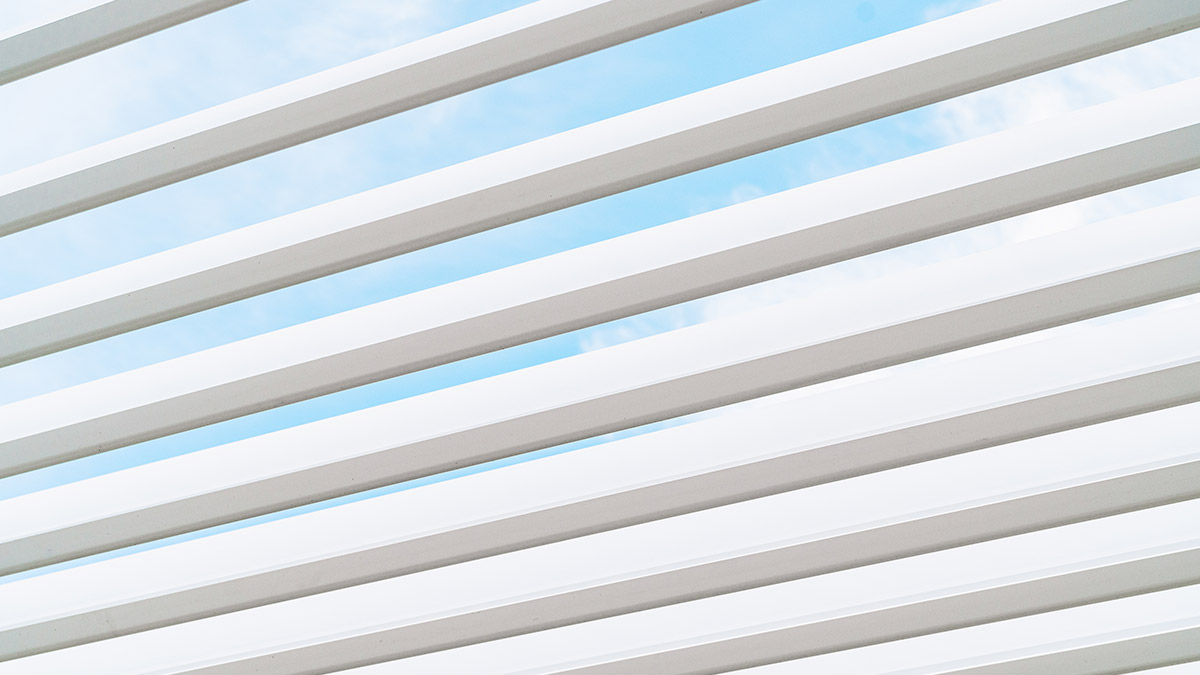

SYZYGY Global stands at the forefront as the premier designer and builder of custom outdoor living structures in South Florida, boasting a distinctive collection of award-winning residential and commercial projects. Our expertise shines through in crafting custom all-aluminum pergolas that seamlessly accentuate any home, whether it’s a cozy coastal cottage in Vero Beach or a soaring high-rise in South Beach Miami. Notably, we have been honored with numerous industry awards for our exceptional commercial projects, including those at the region’s most elegant restaurants and prestigious private country clubs along the Gold Coast.
Beyond our design prowess, we take pride in assisting our customers in comprehending the intricacies of pergola, cabana, pool enclosure, and carport design and installation. To this end, we have developed a comprehensive glossary of terms commonly used in the outdoor living sector. Our hope is that this glossary serves as a valuable resource, answering any questions you may have about industry terminology and facilitating effective communication between you and your South Florida pergola contractor.
A pergola is an ancient outdoor living structure that has evolved into high-tech feats of motorized functionality combined with elevated design. Typically, it features a roof supported by two or four columns, with open sides, offering partial shade for a garden or backyard. While the traditional fixed slatted roofs are still common, modern pergolas have undergone significant advancements. Today, the most sophisticated custom structures are crafted from:
At SYZYGY Global, we design cutting-edge pergolas with motorized louvered roofs that can adjust to allow or block sunlight and rain. Advanced features include motorized retractable screens, integrated LED lighting, and smart sensor controls that automatically close the roof during rain showers.
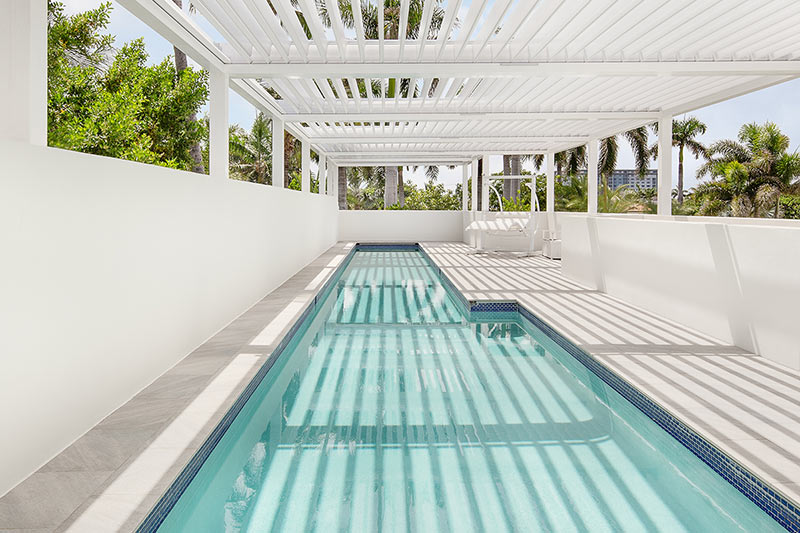
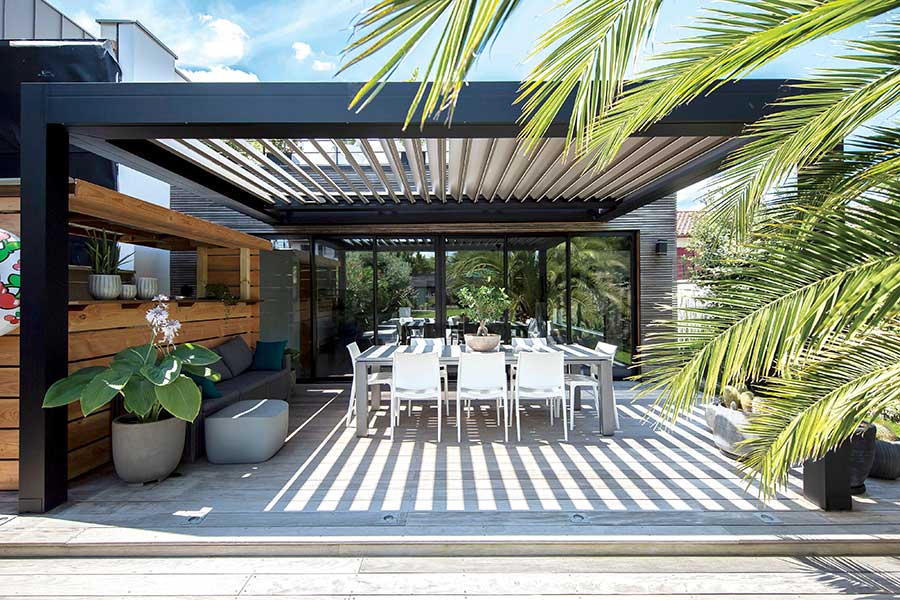
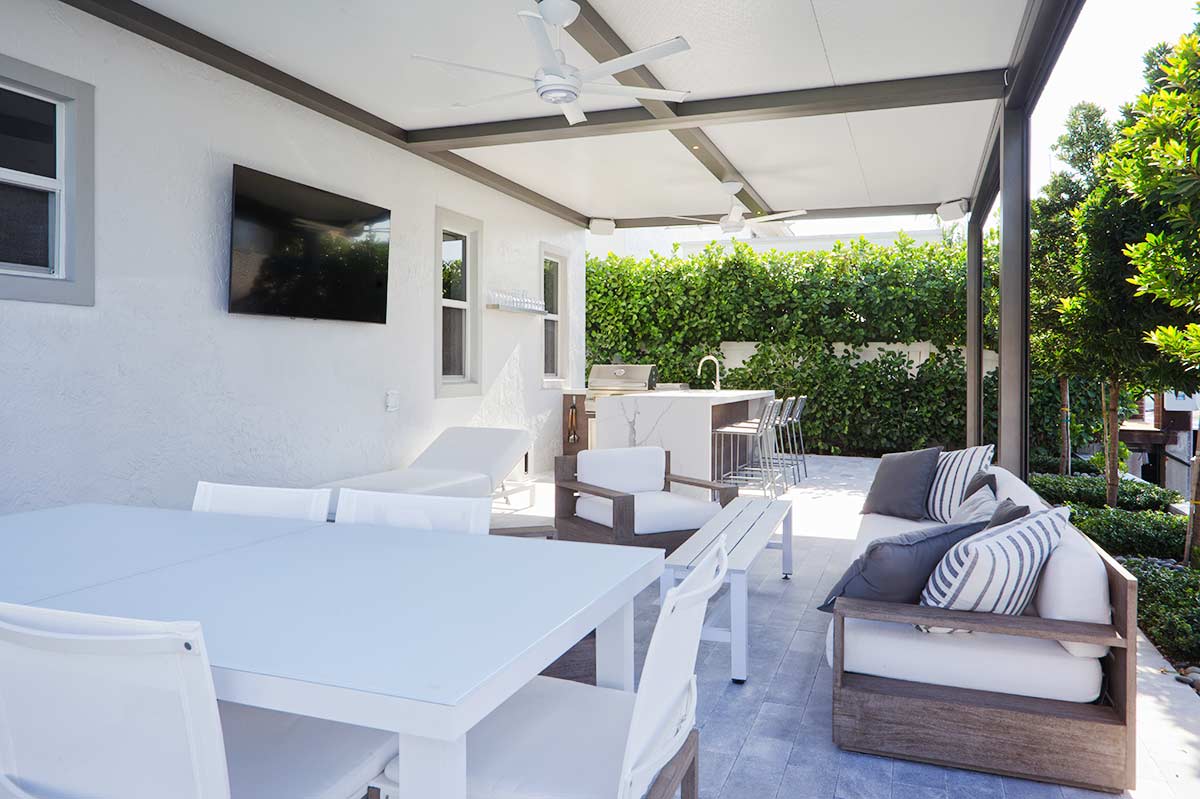
The term ‘patio’ refers to a versatile outdoor relaxation space, often surrounded by landscaping or low walls that double as seating areas. Originally derived from the Spanish word “patio,” which means courtyard, modern patios may not have high surrounding walls but still serve as functional and visually appealing spaces. These flat, paved areas can be constructed using various materials such as pavement, crushed stone, bricks, or marble. Residential patios can be situated adjacent to a home or stand-alone in a garden or yard. In commercial settings, patios can significantly expand seating areas for restaurants and hospitality venues. When protected with an all-weather pergola, commercial outdoor seating areas become profitable regardless of weather conditions.
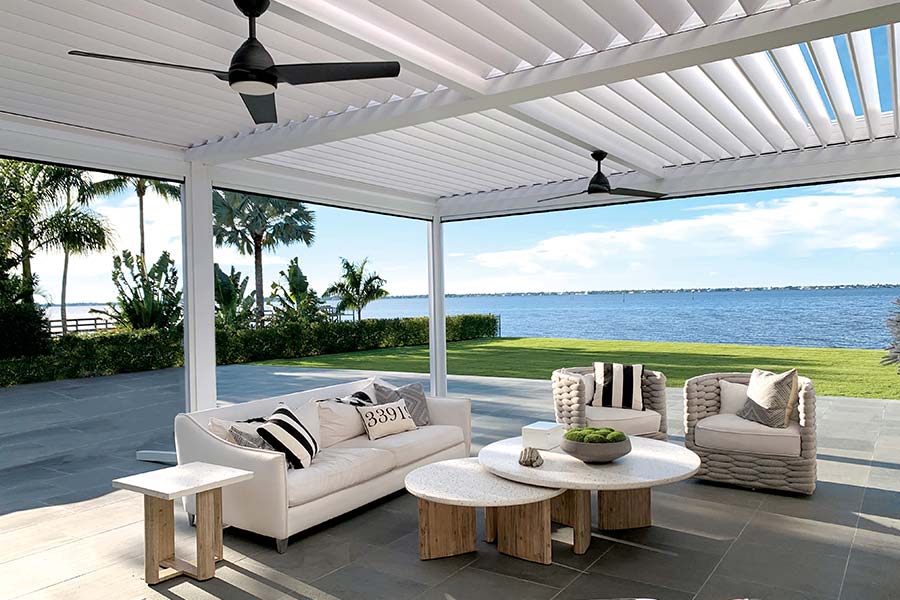
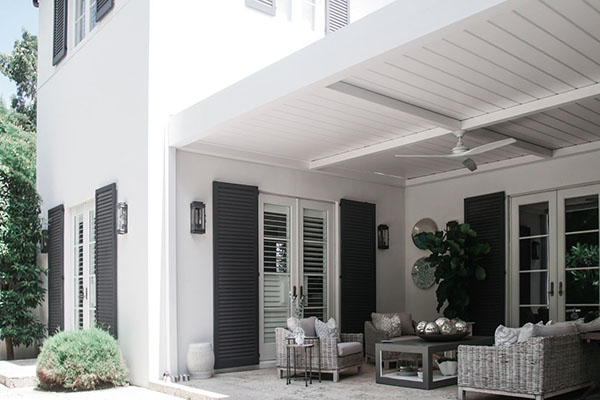
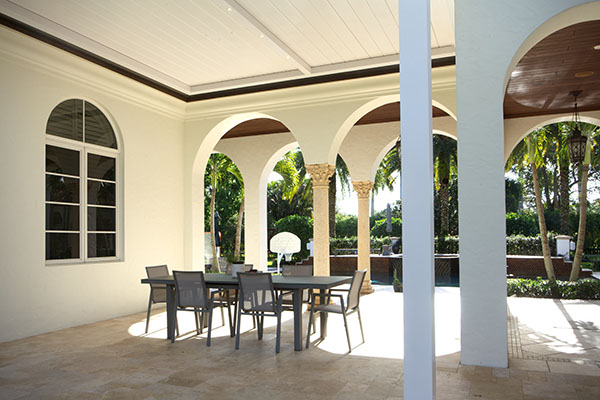
Decks are another common addition to both residential and commercial spaces in South Florida. They often act as seamless extensions of indoor entertainment areas. Coastal decks can extend over waterways to accommodate dockage, while urban settings may include rooftop decks. Traditionally made from wood decking, composite materials are gaining popularity due to their long-term durability in the humid climate. A deck serves as an excellent foundation for a modern outdoor living space. When equipped with proper footings, a deck can accommodate a custom aluminum pergola or a customizable cabana, creating an all-weather destination. These outdoor spaces can feature built-in dining areas, outdoor kitchens, fire pits, and more.
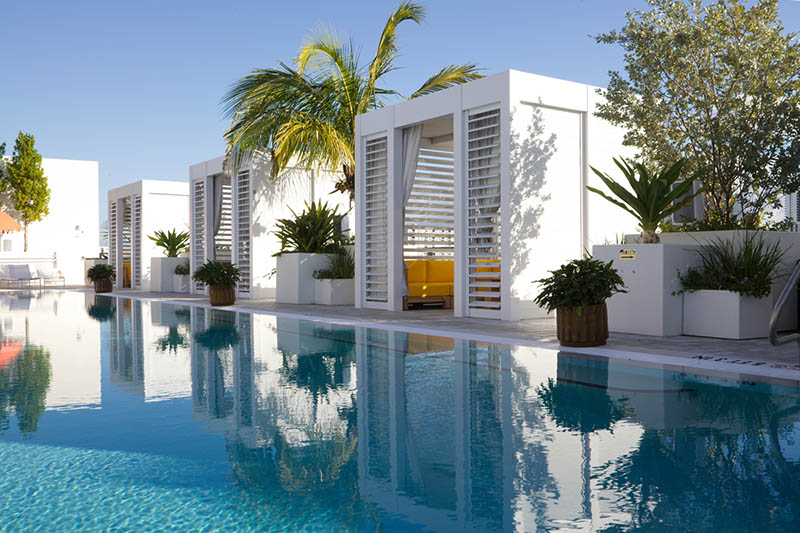
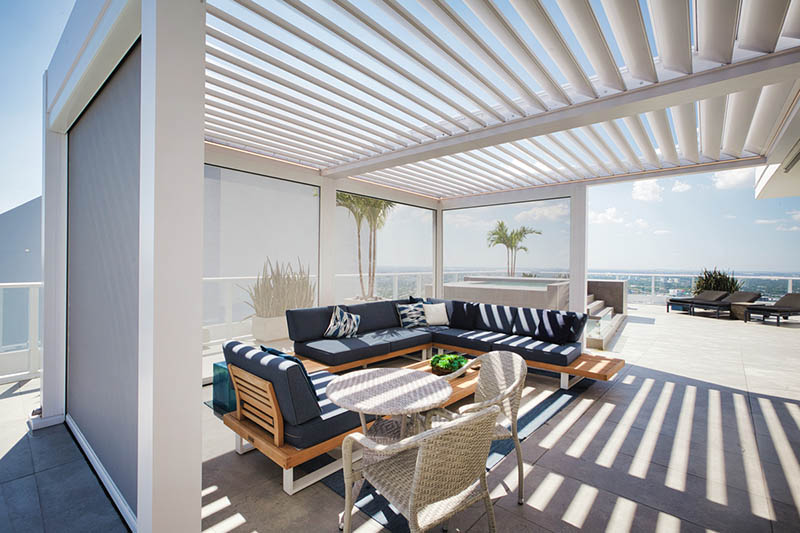
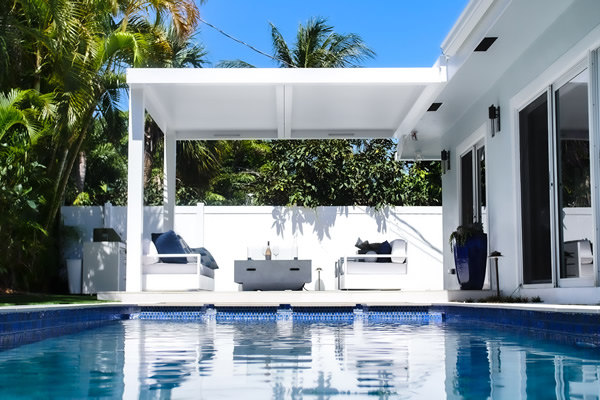
Canopies are fabric shade structures designed to offer minimal shade and weather protection. They can be suspended over a patio or standalone deck using four support stakes, or attached to a building with two support posts. While suitable for seasonal use in residential or commercial outdoor dining spaces, canopies are less ideal for year-round protection in South Florida. The lightweight fabric is susceptible to tearing in heavy winds. Homeowners and hospitality businesses in the region typically prefer more durable shade solutions such as pergolas or cabanas, ensuring all-weather protection.
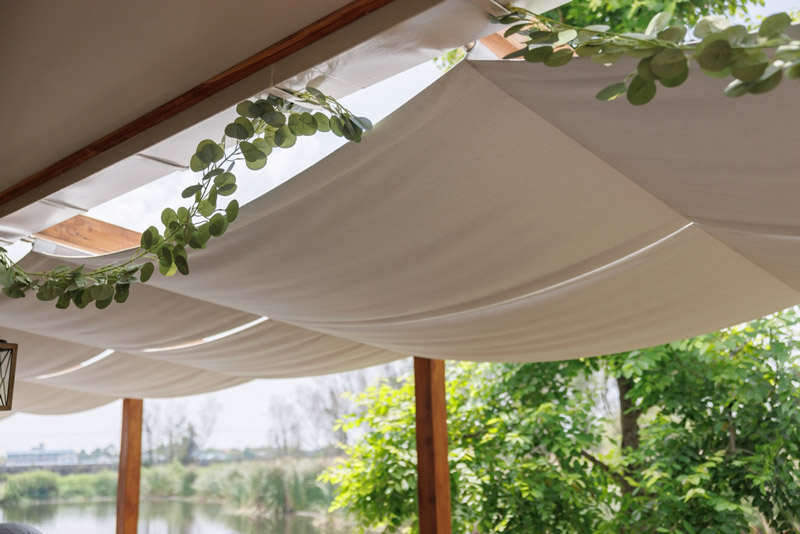
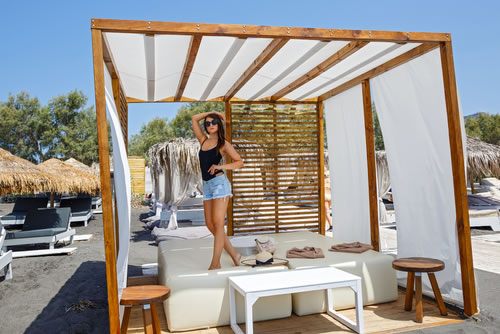
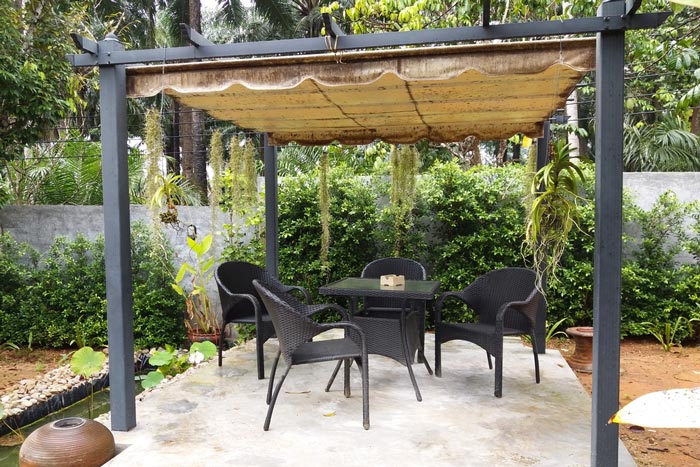
A gazebo, a fixed roof structure, is most-often fabricated from wood. The structure itself is open on the sides and has a static roof covered with traditional shingles, tiles, etc. Large gazebos are often seen in a town square or other public spaces, though they can also be built in a residential backyard. In this setting, they are often constructed as shade structures in a garden or by a pool. Gazebos create full-time shade and are adept at blocking the rain and snow but are unable to open the roof in the dynamic way of an adjustable louvered roof pergola.
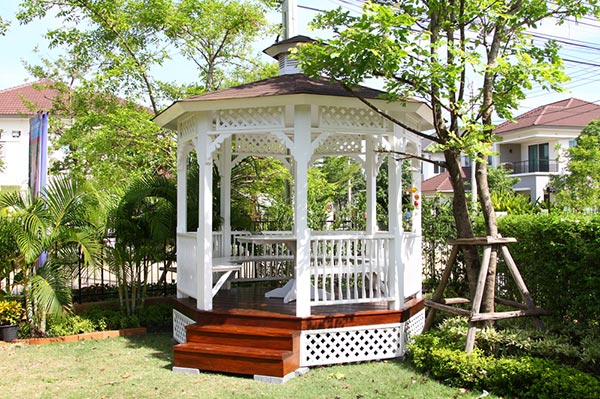
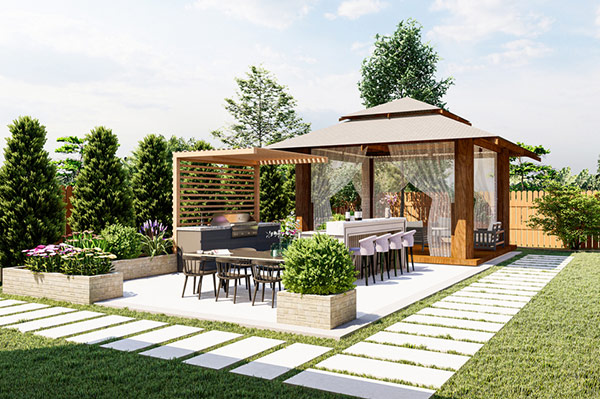
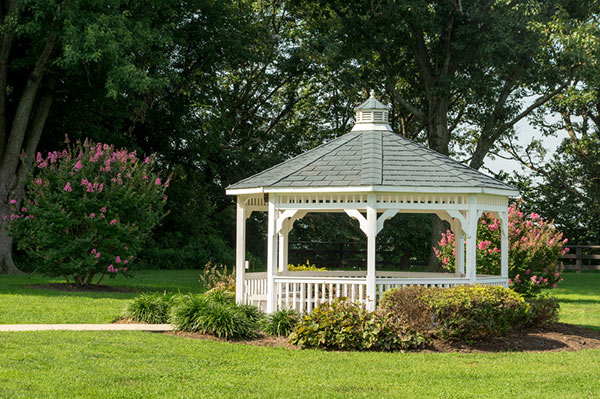
Understand What Separates a Pergola and Gazebo >>
A slat, a thin narrow piece of metal or wood, is often used to refer to a pergola louver. They are combined in an overlapping series, like a Venetian blind or slatted fence, to create shade or block the view into an outdoor living space. Static louvered pergola roofs use slats for their roofs, which we refer to as louvers, set at an angle to create shade on a patio, deck, or pool deck. While they are unable to provide complete shade or block the rain in any capacity, slatted roof pergolas do deliver a stylistic architectural aesthetic for outdoor living spaces. These static structures are often adorned with climbing plants that can be trained onto the support columns and roof slats to create a garden pergola.
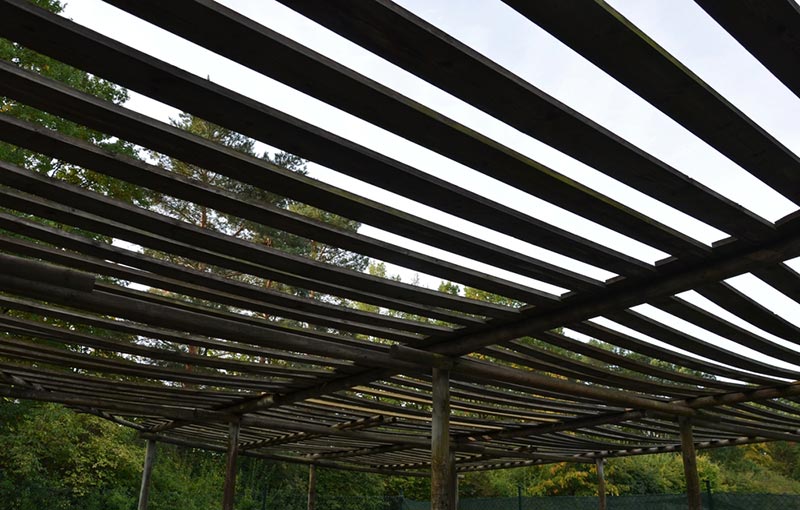
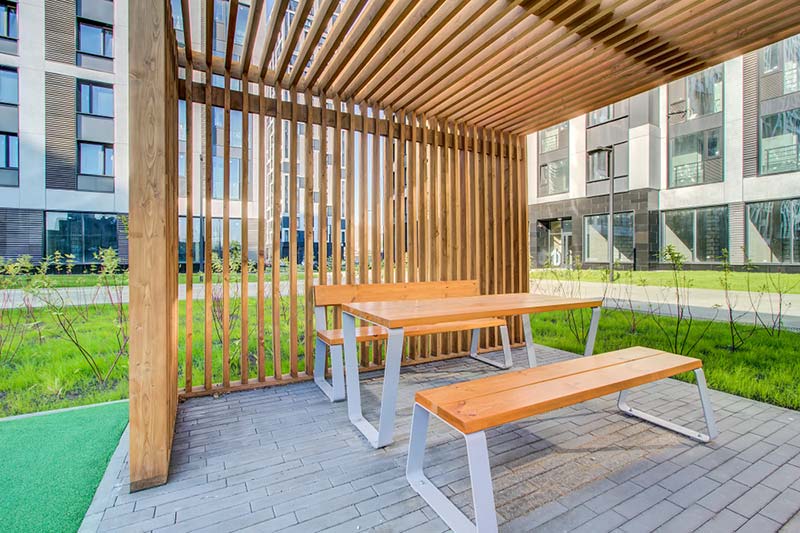
A scientific term “bioclimatic” refers to the relation between living matter and climate. In the pergola market, the matter element of the definition refers to the people occupying a covered patio space. A bioclimatic pergola is one capable of impacting the climate for those guests. Our bioclimatic pergolas are the most advanced on the market. Leveraging insulated fixed or adjustable roofs, our pergolas allow you to regulate the temperature under your pergola. With our motorized adjustable louvered roof pergola, you can open the roof to increase sun exposure, angle the louvers to create shade while promoting airflow, or close the roof to seal out the sun and rain.
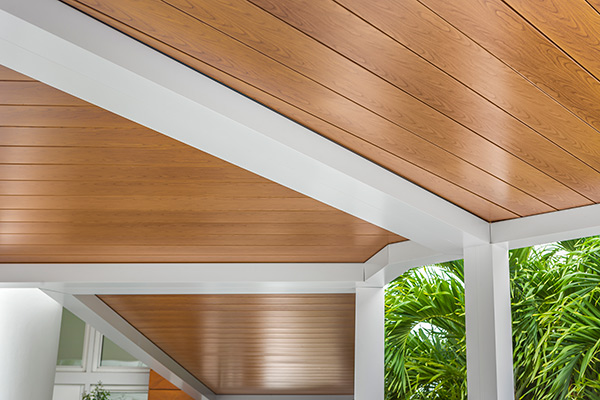
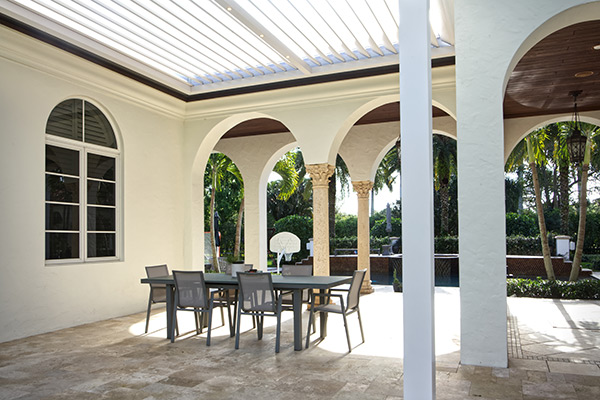
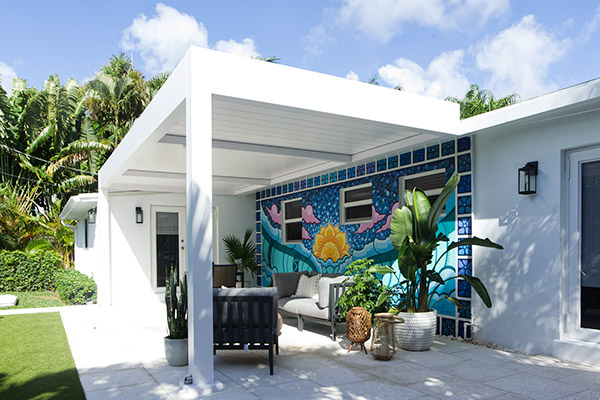
A louver is a single slat that makes up a louvered pergola roof. Set is series, fixed louvers create partial shade, and the physics of the structure create a natural airflow through the louvers. The advanced motorized louvers built into our pergolas improve the functionality of the pergola roof, allowing you to control the angle of the louvers. Louvers can be set fully closed to create full-time shade and block the rain. Alternatively, the roof can be further opened to provide shade while allowing air to circulate across the patio, or set completely open to allow full sun to reach the patio.
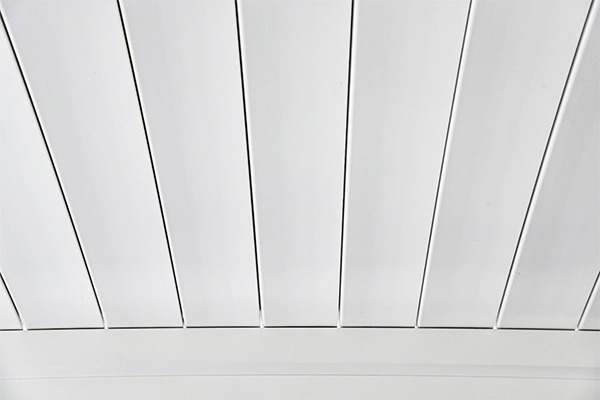
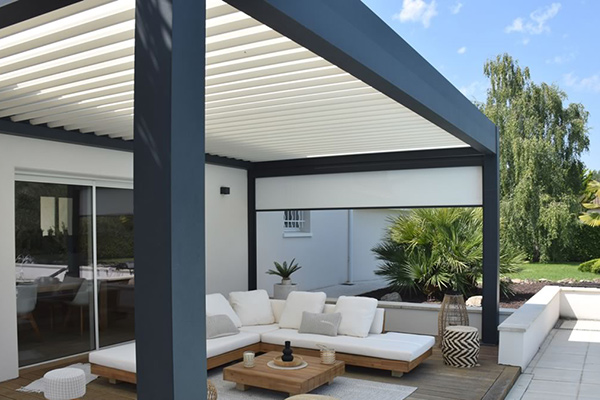
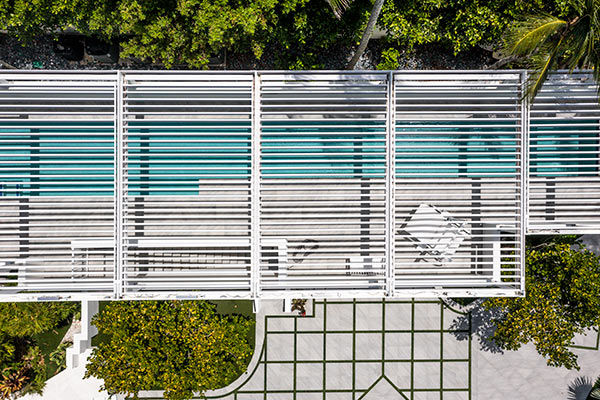
Rafters are the part of traditional roof construction that provide structural stability to the peak of the roof and support the weight of the roof itself. While pergolas do not include rafters in the traditional definition, the look of pergola louvers sometimes leads people to refer to the fixed slats as rafters. In modern aluminum pergolas, the weight of the pergola roof is supported by the surrounding pergola frame. This means the interior roof panels can be customized to meet customer’s unique design needs. The roof can be designed with a solid insulated fixed-panel roof that creates full-time shade, or an adjustable louvered roof that angles to create shade or closes tightly to seal out sun and rain.
The gutter is a trough affixed to the edge of a roof at the roofline to capture rainwater as it rolls off the roof. The gutter feeds into a downspout allowing water to be channeled away from the foundation of the home or patio. The modern aluminum pergolas that we design, and are fabricated by our manufacturing partners at Azenco, feature hidden internal gutter systems. The fully extruded gutter system mitigates leaks and sits neatly into the internal expanse of the pergola roof frame and support columns. The system seamlessly captures every drop of rain that lands on the pergola roof, and ports it through the gutters to a downspout exiting the base of a support column. This allows rainwater to be channeled into surrounding landscaping rather than allow it to flood the patio below.
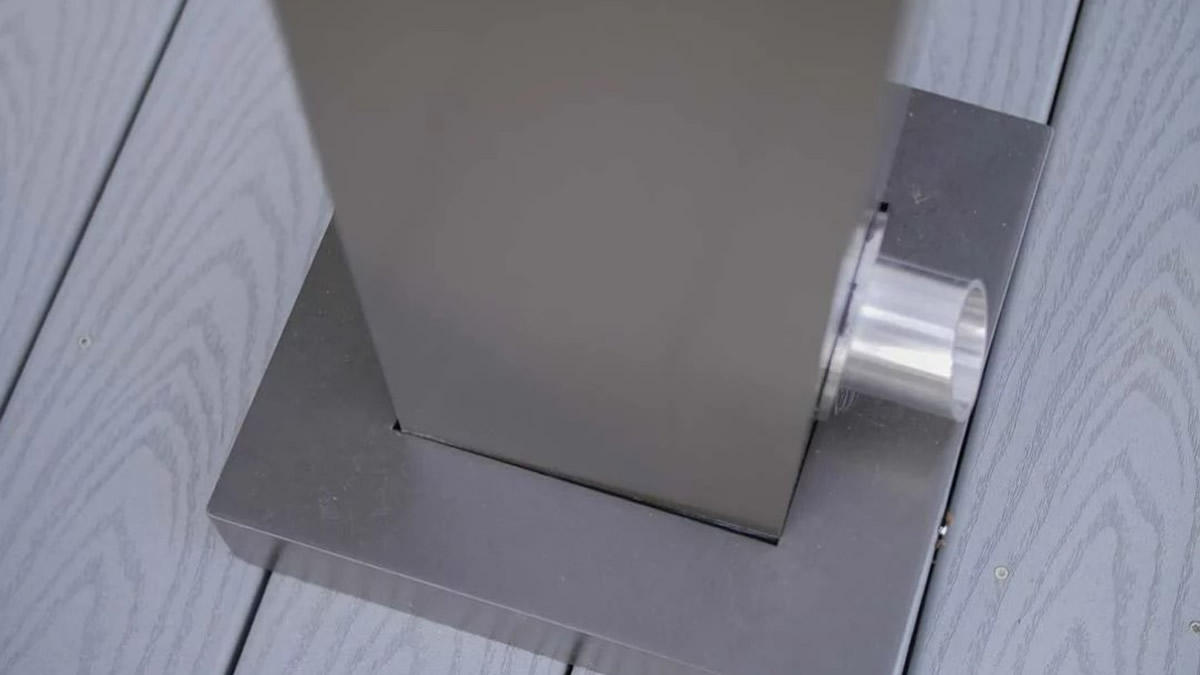
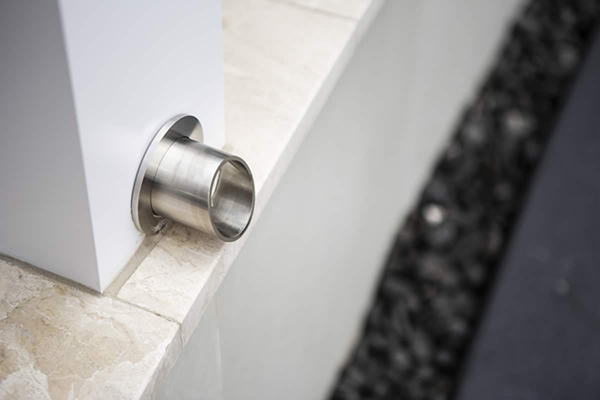
A cantilever structure is a horizontal structure that extends beyond its vertical support column. Cantilever designs can be added to custom pergolas to create a unique architectural look for a roof line. Not only can a cantilever pergola roof look stylish, but it can also have a functional use for pergola designers. Because a cantilever roof extends beyond its support columns, the roof can essentially float out over a patio. This is ideal for designs that are seeking to preserve uninterrupted sightlines throughout, or extend a shaded area out over a pool.
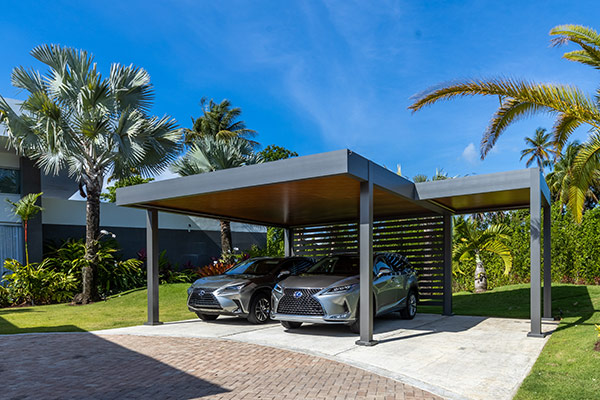
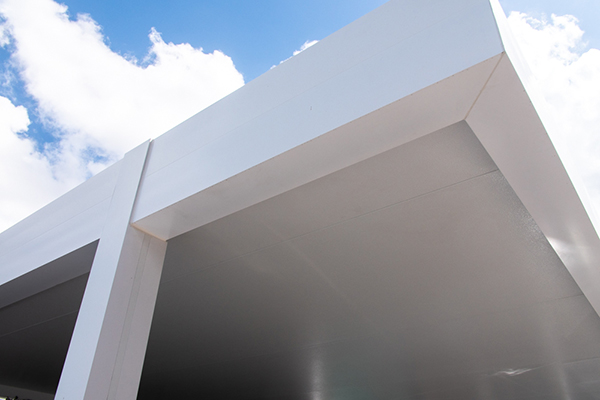
For pergola designers, the term attached is used to refer to a pergola roof affixed to another structure. A pergola attached to a home or restaurant allows the covered outdoor space to become a truly seamless extension of the interior spaces. This design is often leveraged to provide complete rain protection as guests travers from indoor to outdoor spaces. It also creates a natural seamless flow between inside and out. Attached pergolas are mounted on one or two sides of a home and supported by columns along the extended edge of the pergola.
Design choices: Pergola Attached to the House Versus a Freestanding Pergola >>
Freestanding outdoor structures are any building that is not attached to another structure. A standalone patio cover can be built in a yard, garden, on a pool deck, etc. This type of pergola is solely supported by the pergola columns. Freestanding pergolas often feature four support columns at each corner of the structure, though larger pergolas can sometimes require additional supports for longer roof spans. Freestanding pergolas allow for sweeping 360-degree views of their natural surroundings or can include privacy walls along some sides. With either fixed, solid or louvered privacy walls, or motorized retractable privacy curtains, a freestanding pergola can easily transform from an open and airy outdoor space to a cozy and intimate enclosed living space.
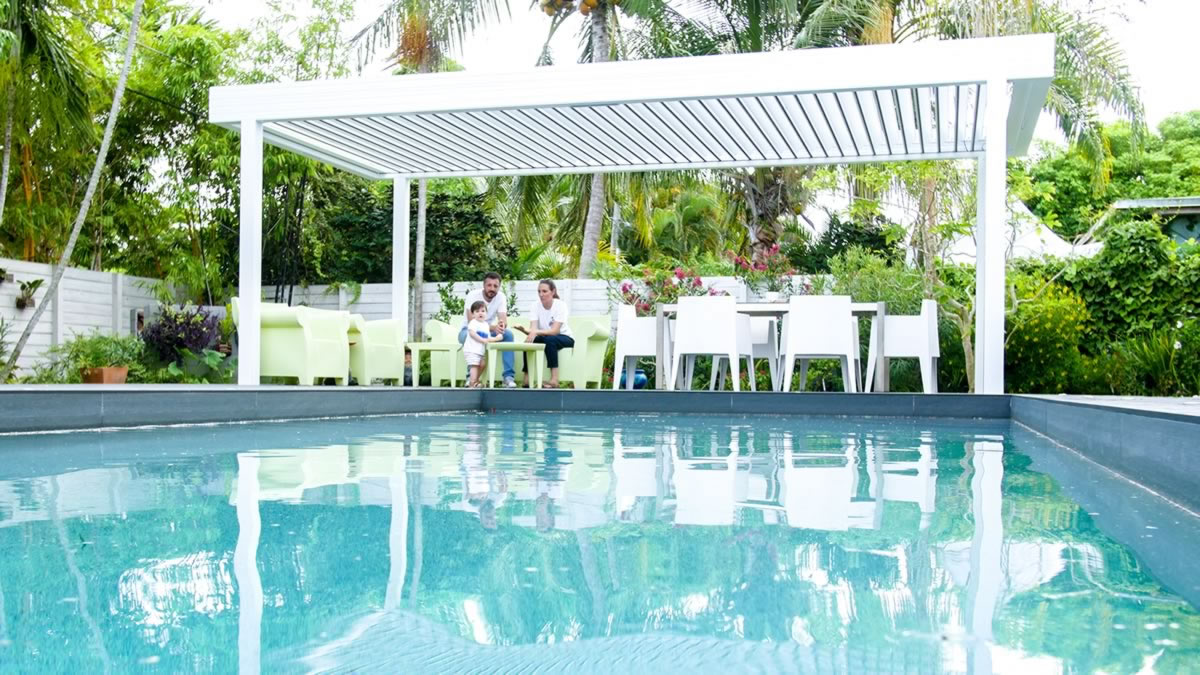
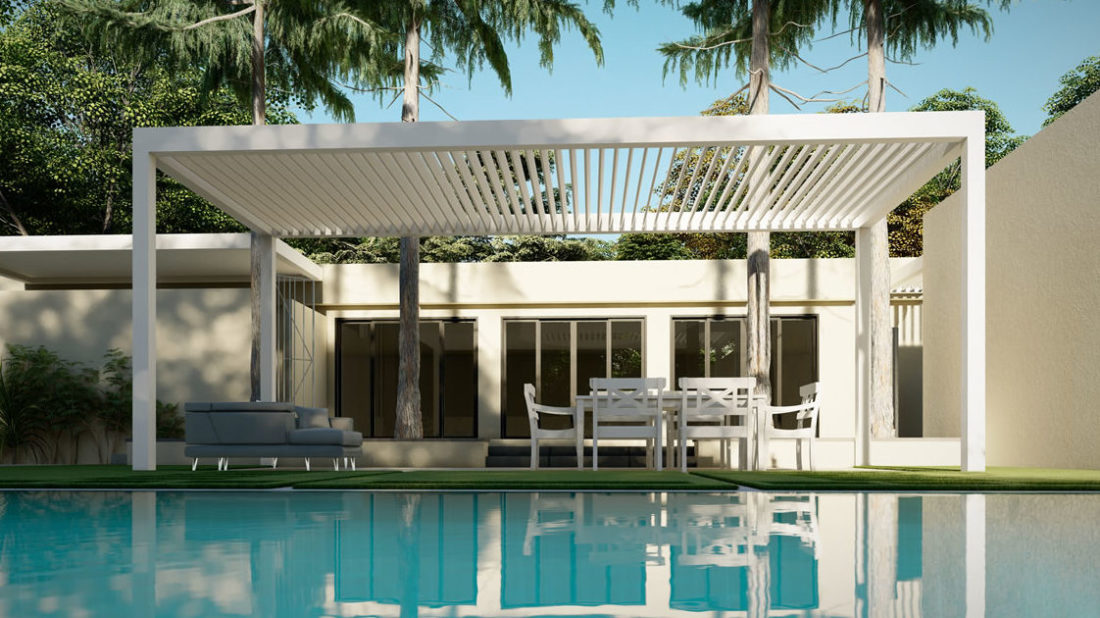
A post is a column that supports the weight of the pergola frame and pergola roof. Each support post is anchored to the ground or structure below a pergola with a footing. These footings can be buried deep in the ground or affixed to a building roof, stone patio, or wooden deck with bolts. In a modern aluminum pergola designed by SYZYGY Global, the support columns are hollow, allowing the pergola’s hidden internal drainage system to be concealed inside. With proper planning during the design phase, the posts can also serve as a space to embed LED lights, electrical outlets, etc. Because each of our pergola columns is fabricated to our custom specifications, we can adjust the height of the pergola columns to accommodate changing roof elevations within a single flowing roof structure or extend the overall height of a pergola to align with the home’s roofline, accommodate storage for an RV or boat, etc.
South Florida Buyer’s Guide to the Pergola >>
The force exerted on an outdoor structure by the wind is called wind load. Most often expressed in pounds per square inch, and the wind load for which a pergola is engineered is a critical element of its structural engineering. Without proper engineering, excessive wind load can damage or distort a pergola. Even slight warping due to excessive wind load can cause a louvered roof pergola to leak, or worse, fail to operate properly. Throughout Florida, local building codes dictate the engineering requirements for outdoor structures based on several factors, including anticipated wind load. Therefore, one of the initial assessments our design team conducts for any project is an analysis of the prevailing winds in an area, as this can affect engineering requirements, as well as pergola location or pergola orientation on the property.
Many products are marketed as hurricane-rated. The term refers to products that have been tested to withstand hurricane force winds. While no pergola can be designed to fully withstand a massive category 5 hurricane, the Azenco pergolas we utilize in our pergola projects have been tested and certified as a hurricane rated pergola. To meet this certification a pergola must be fabricated from the highest-quality materials, employ heavy duty assembly hardware, and utilize the proper footings for its unique site-specific soil conditions. To ensure compliance with these stringent standards, every pergola project must be properly vetted by local permitting authorities. While this process can be confusing for the layperson, the SYZYGY Global team has years of experience working with local permitting departments to seamlessly navigate these approvals. Additionally, to streamline the process, our manufacturing partner Azenco, has secured a Miami-Dade Certification of Acceptance for its structures which denote that each structure has been tested under the strictest storm-resistance standards in the country.
Can a Pergola Withstand a Hurricane? >>
We hope this glossary provides you with a clearer understanding of the key terms related to outdoor living structures. Should you have any further questions or require assistance, do not hesitate to reach out to SYZYGY Global, your premier designer and builder of custom outdoor living structures in South Florida.

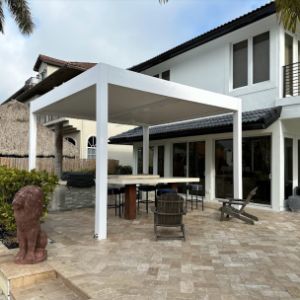
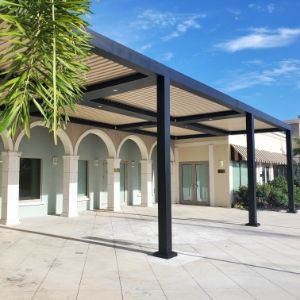
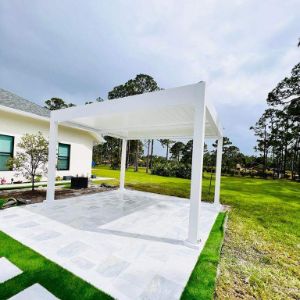
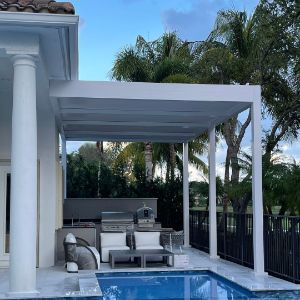
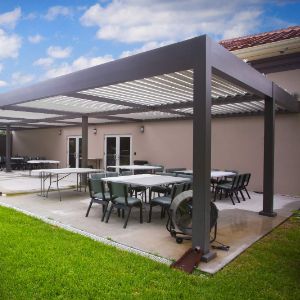
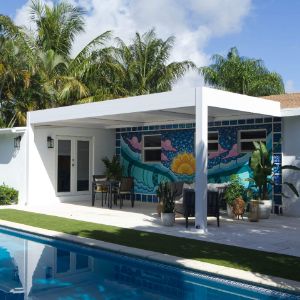
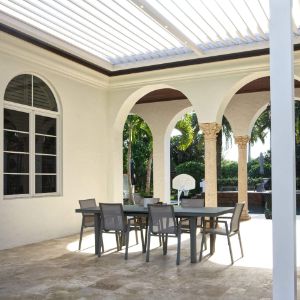


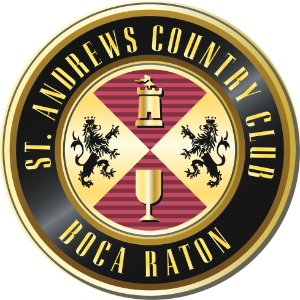



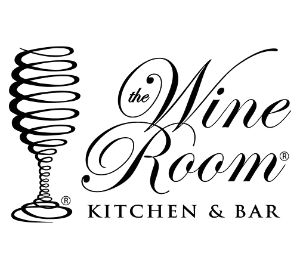

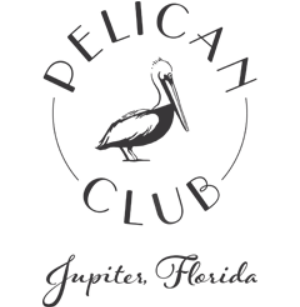









Name
